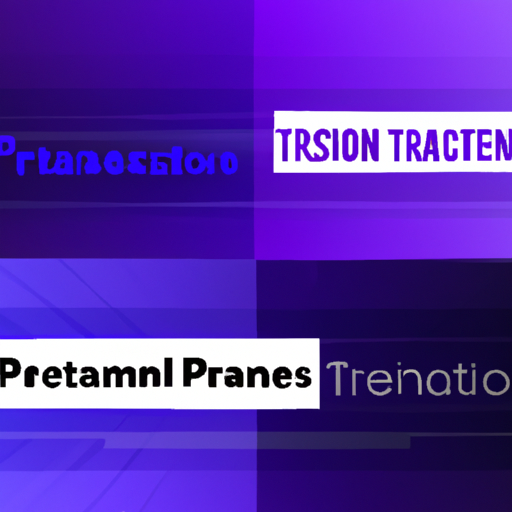Introduction to Transitions in Premiere Pro
Transitions are essential elements in video editing that help create smooth and professional scene changes. Whether you’re producing a cinematic sequence, a YouTube vlog, or a corporate video, knowing how to create transitions in Premiere Pro project can elevate your storytelling and give your content a polished look. In this comprehensive guide, we’ll cover everything from basic transition techniques to advanced custom transitions, using industry-recommended workflows and video editing best practices.
Table of Contents
- Why Use Transitions in Video Editing?
- Types of Transitions in Premiere Pro
- Adding Basic Transitions
- Customizing and Fine-Tuning Transitions
- Creating Custom Transitions in Premiere Pro
- Troubleshooting Common Transition Issues
- Pro Tips for Smooth Transitions
- Conclusion
Why Use Transitions in Video Editing?
Transitions play a crucial role in guiding your audience through the narrative. They help to:
- Signal a change in scenes or time
- Create visual interest and engagement
- Add pacing and rhythm to your video
- Conceal jump cuts or abrupt changes
In Premiere Pro video editing, transitions can be as simple as a cross dissolve or as dynamic as a custom motion transition.
Types of Transitions in Premiere Pro
Premiere Pro offers a wide variety of built-in transitions that you can use to enhance your video projects. Some of the most popular transition categories include:
- Dissolve Transitions: e.g., Cross Dissolve, Dip to Black, Film Dissolve
- Wipe Transitions: e.g., Linear Wipe, Clock Wipe, Venetian Blinds
- Slide Transitions: Push, Slide
- Zoom Transitions: Adds dynamic camera movements
- Audio Transitions: Constant Power, Constant Gain for smooth audio fades
How to Add Basic Transitions in Premiere Pro
Follow these simple steps to add transitions between clips in your Premiere Pro sequence:
- Import Your Clips: Bring your video clips into the Premiere Pro timeline.
- Select the Edit Point: Find the cut between two clips where you want to add a transition.
- Open the Effects Panel: Go to the Effects workspace and expand the Video Transitions folder.
- Choose a Transition: Drag your selected transition (e.g., Cross Dissolve) onto the cut between two clips in the timeline.
- Preview and Adjust: Use the Program Monitor to preview your transition. Adjust duration by dragging the edges of the transition in the timeline.
You can also right-click on the cut and select Apply Default Transitions for a quick dissolve or fade.
Customizing and Fine-Tuning Transitions
To refine your transitions and make them unique, consider these options:
- Adjust Transition Duration: Click and drag the transition edge in the timeline to lengthen or shorten the effect.
- Change Alignment: Right-click the transition and choose Start at Cut, Center at Cut, or End at Cut for precise control.
- Edit Properties: Select the transition and use the Effect Controls Panel to tweak settings like direction, border, or feathering.
Mastering these controls ensures your transitions fit the pace and style of your Premiere Pro project.
How to Create Custom Transitions in Premiere Pro
For editors seeking a distinctive look, custom transitions provide a creative edge. Here’s how to build your own:
- Use Adjustment Layers: Place an Adjustment Layer over your clips and apply effects like Transform, Directional Blur, or Color Grading.
- Animate Keyframes: In the Effect Controls Panel, set keyframes for properties such as Position, Scale, or Opacity to animate the transition.
- Combine Multiple Effects: Stack effects and blend modes to achieve complex transitions (e.g., glitch, spin, or zoom effects).
- Save Presets: Once satisfied, right-click your effect stack and choose Save Preset for future use in your video editing workflow.
Experimenting with keyframe animation and custom effect combinations can open up limitless creative possibilities.
Troubleshooting Common Transition Issues
Sometimes, transitions might not work as expected. Here’s how to resolve common problems:
- Not Enough Handles: If clips are too short, extend them or trim your edit to allow room for the transition.
- Choppy Playback: Render your sequence or lower playback resolution for smoother previews.
- Transition Not Visible: Make sure the transition is applied to the correct edit point and is not underneath other layers.
Pro Tips for Smooth Transitions in Premiere Pro
- Match Motion and Color: For seamless transitions, match the movement and color between outgoing and incoming shots.
- Use Audio Transitions: Add audio crossfades to avoid abrupt sound cuts and create a professional flow.
- Leverage Presets: Premiere Pro and third-party packs offer transition presets to save time and maintain consistency across projects.
- Experiment with Creative Effects: Combine masking, track mattes, and blend modes for advanced custom transitions.
Conclusion
Mastering how to create transitions in Premiere Pro project is essential for any aspiring or professional video editor. With a solid grasp of the basics and a willingness to explore creative techniques, you can transform your video editing workflow and produce stunning, cinematic content. Remember, the key to great transitions is subtlety and relevance to your story. Keep practicing and experimenting with new styles to discover what works best for your unique projects.
